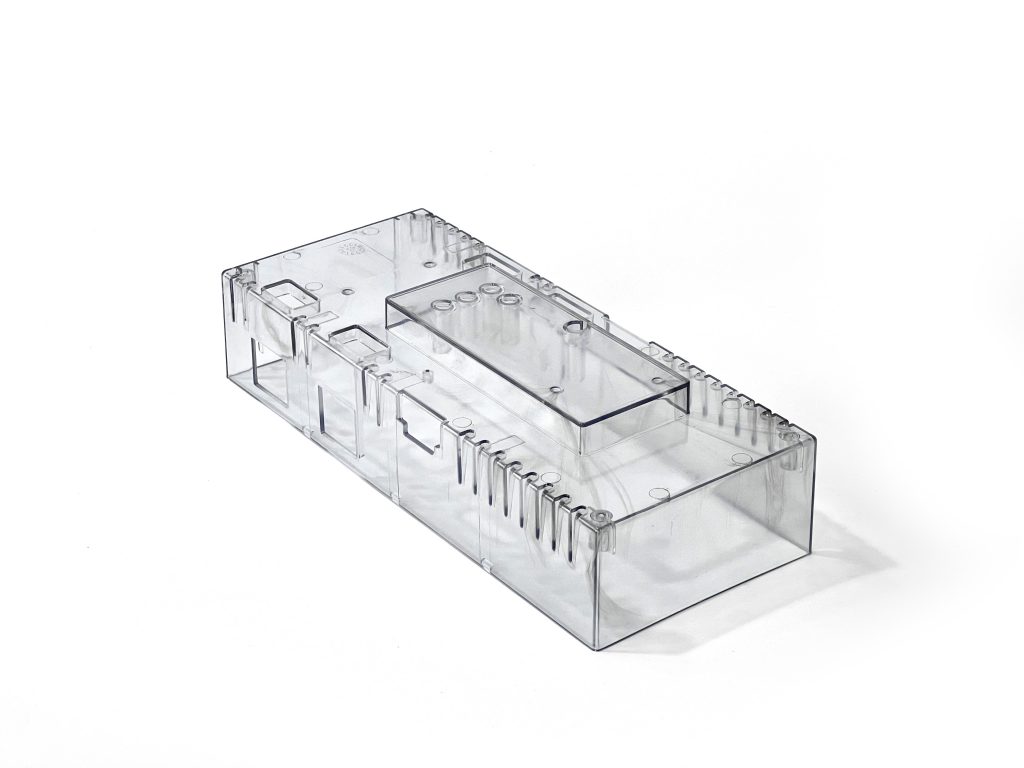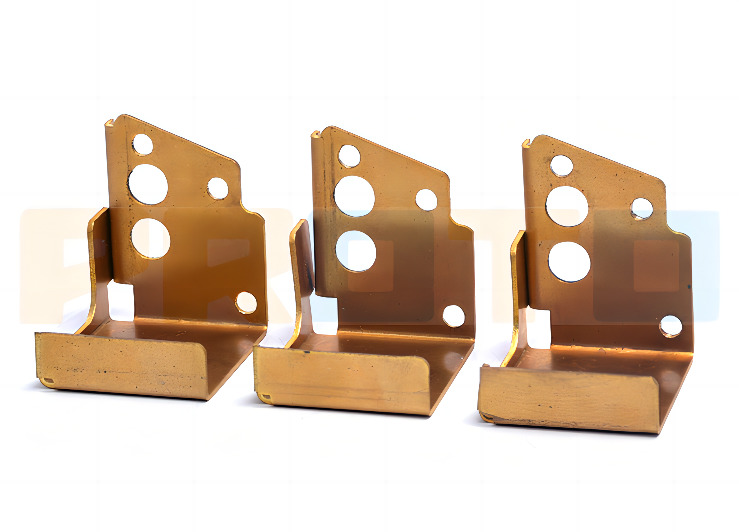“Plastic fabrication” is the step in the design and manufacturing process when a selected shaping or molding method turns raw polymer materials into finished products. The end goal in the plastic manufacturing business is to select the right fabrication method for the economical production of a wide range of goods fit for service in applications from simple household items to sophisticated industrial components. The fabrication process typically entails some combination of cutting, molding, welding, and assembly steps to achieve the desired plastic shapes and sizes.
Plastic materials are generally adaptable to a number of fabrication methods, allowing the design flexibility for the manufacturer to produce plastic parts which are affordable and light in weight. But plastic fabrication also has problems, such as potential toxicity of the raw materials, sensitivity to UV light, and lack of high temperature strength compared to metals. This article will discuss plastic fabrication, its purpose, how it works, advantages, and disadvantages.
What Is Plastic Fabrication?
The term “plastic fabrication” describes the process of creating, producing, and/or assembling custom-designed plastic products or high volume parts out of plastic or composite materials. Plastic fabrication includes a variety of processes, such as:
These methods each has a different set of processes. Plastic’s adaptability, cost-effectiveness, and light weight make it versatile, and for that reason, it is widely used.

What Is Plastic Fabrication Also Known As?
“Plastic processing” and “plastic manufacturing” are other terms for plastic fabrication. This phrase can refer to any or all of the steps that go into shaping and molding plastic materials into finished goods.
What Is the Purpose of Plastic Fabrication in Manufacturing?
Plastic fabrication is used in manufacturing to create finished goods with specific forms and functions from raw plastic materials. Due to plastic’s flexible nature and affordability, this process enables the production of a variety of items used in a variety of industries, including consumer goods, automotive components, medical devices, and electronics.
What Are the Industries That Use Plastic Fabrication?
The automotive, food, aerospace, electronics, medical, packaging, and consumer goods industries make use of one or more plastic fabrication methods to create finished products. The adaptability of plastic fabrication enables it to serve a variety of applications in these industries. Injection molding is a widely used plastic fabrication method in various industries. The process starts with molten plastic material injected into a mold cavity, where it cools and solidifies to form the desired shape. Additionally, the medical field employs injection molding to create items like syringes, IV components, and sterile medical equipment.
How Does Plastic Fabrication Work?
Plastic fabrication involves multiple processes, starting with design and planning, material selection, material preparation, forming and shaping, finishing and assembly, and concluding with quality control and inspection. There are several plastic fabrication methods, each with various processes. Listed and discussed below are three common methods:
What Is the Step-by-Step Process of Plastic Fabrication?
Each step of the plastic manufacturing process, from design to delivery, is essential for economically transforming raw polymeric materials into usable products.
Skipping any of the steps listed above may result in the production of plastic parts that are defective or incomplete. Each step is crucial to achieving success and meeting customer expectations.
Can Fabricated Plastic Parts Be Polished Using Acetone Vapor Smoothing?
Acetone vapor smoothing is a technique for reducing surface roughness and developing a polished appearance on fabricated plastic parts. The plastic product is exposed to acetone vapor, which dissolves the rough surface layer of the polymer and leaves behind a smoother surface. Acetone vapor smoothing works by thoroughly dissolving the plastic’s outer layer and removing any surface flaws, focusing in particular on the high surface energy associated with asperities.
What Are the Materials That Can Be Used in Plastic Fabrication?
All plastics can be manufactured into final products using suitable fabrication techniques. The following materials are some of the ones that are commonly employed in the manufacture of plastics:
How Much Does Plastic Fabrication Cost?
The cost of manufacturing plastic products depends on: the size of the part, the material it is made from, and the fabrication method used. Simple molds cost between $3,000 and $6,000, while more complex, large-scale, or high-volume molds can run between $25,000 and $50,000 or more. For exceptionally complex projects, costs may exceed $100,000. Plastic fabrication encompasses various methods beyond molding. Hobbyists can buy entry-level 3D printers for $200 to $500. For individuals with some experience, midrange solutions between $500 and $2,000 are suitable. Professionals wanting top-notch quality can purchase high-end 3D printers for $2,000 to $10,000. Industrial variants, priced between $10,000 and $100,000, are excellent for use in the automotive, aerospace, and medical industries.
What Are the Advantages of Plastic Fabrication?
Advantages of fabricating products from plastics include:
What Are the Disadvantages of Plastic Fabrication?
Disadvantages of fabricating products from plastics include:
What Are Examples of Fabricated Plastic Products?
Here are some examples of products fabricated from plastics:
What Is the Quality Level of Fabricated Plastic Parts?
Products made of plastic can be of varying quality depending on the choice of material, the manufacturing process, and the design. Durability, resistance to the elements, and precise dimensions are all features of high-quality plastics. However, issues like brittleness, warping, or a shorter lifespan may result from the use of poor-quality materials or poorly controlled production techniques.
Are Fabricated Plastic Products Durable?
Yes, depending on factors like material choice, design, and manufacturing techniques, fabricated plastic products can be durable. High-quality plastics, sound engineering, and the right finishing processes can increase a product’s durability and make it more resistant to abrasion, impact, and the elements. Less durable products may be the result of using inferior materials, poor manufacturing practices, or of misapplication of material when designing the product in the first place.
What Is the Difference Between Plastic Fabrication and Plastic Extrusion?
Plastic extrusion is a particular technique within the field of plastic fabrication, whereas plastic fabrication encompasses a wider range of techniques, including: shaping, molding, cutting, welding, and assembly of plastic components into finished goods. Plastic extrusion entails melting plastic and pressing it through a die to form continuous profiles with constant cross-sections. This process is often used for items like pipes, tubes, and window frames.
What Is the Difference Between Plastic Fabrication and Sheet Metal Bending?
Plastic fabrication refers to making products from plastics using any of a number of different manufacturing methods. One of the possible methods for making plastic parts is the bending of sheet plastic. Some examples of parts made by bending plastic sheets are signage, displays, covers and enclosures, and light diffusers.
Sheet metal bending is a particular manufacturing process applied to thin metals. In particular, in sectors like consumer goods and automotive, it offers versatility for producing intricate designs and one-of-a-kind items.

Sheet metal bending is used to reshape metal sheets to create desired shapes and angles. Construction and manufacturing sectors often use this method to create components like brackets, enclosures, and panels. Sheet metal bending, as opposed to plastic fabrication methods, involves working with metal materials, which offer improved strength, rigidity, and durability compared to plastics.
Summary
This article presented plastic fabrication, explained it, and discussed how it works and its advantages. To learn more about plastic fabrication, contact Proto MFG representative.
Proto MFG provides a wide range of manufacturing capabilities, including fabrication and other value-added services for all of your prototyping and production needs. Visit our website to learn more or to request a free, no-obligation quote.